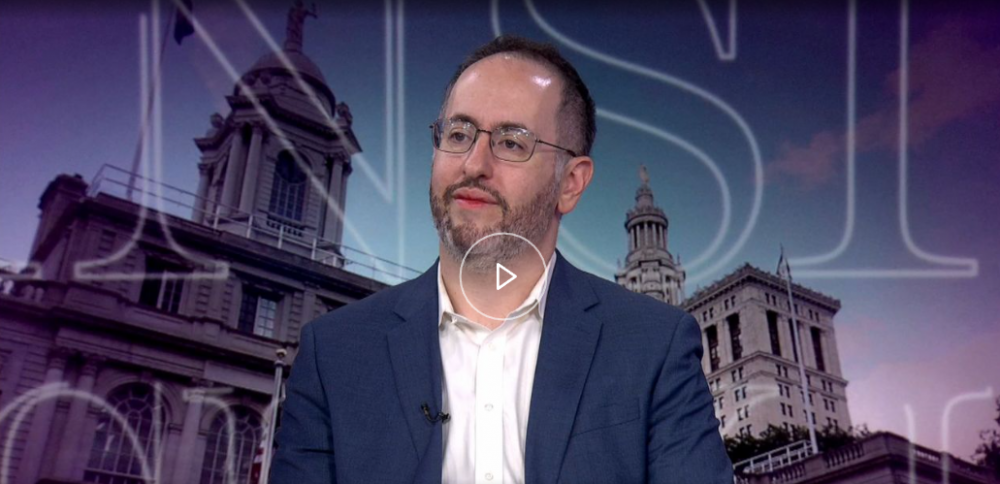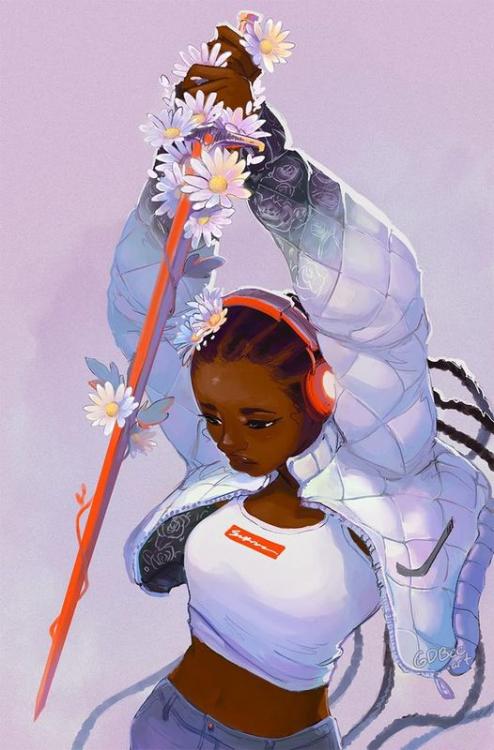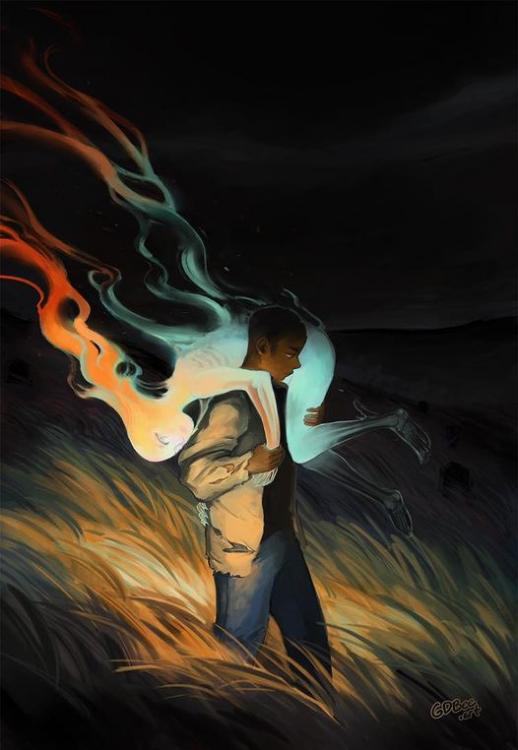-
Posts
2,404 -
Joined
-
Last visited
-
Days Won
91
Content Type
Profiles
Forums
Blogs
Events
Everything posted by richardmurray
-
#NY1 great interview with @bcuza #ny1politics @insidecityhall Albert fox
MTS safety has not increased, it is perceptions of negativity that have increased. New Yorkers, wake upAlbert Fox Cahn talks about MTA’s new plans
By Deanna Garcia New York City
PUBLISHED 9:20 PM ET Sep. 29, 2022
MTA will install two surveillance cameras inside every subway car over the next three years and begin phasing out MetroCards early next year.Albert Fox Cahn, executive director of the Surveillance Technology Oversight Project, a civil rights and privacy group, joined Bobby Cuza on “Inside City Hall” Thursday to talk more about MTA’s new plans.
“The problem is, people don’t feel safer even when they are safer. But the camera’s aren’t going to solve that,” he said. Cameras are not helpful for investigations and are “terrible” at deterring crime, he said.
“So what you’re going to see is subways where people feel even more at risk because you have even more images of crimes that take place, even as crime rates continue to go down,” Cahn said.
Article with Video
https://www.ny1.com/nyc/all-boroughs/inside-city-hall/2022/09/30/albert-fox-cahn-talks-about-mta-s-new-plansThe view to incarceration is similar to those who few public transit a hazard.

Illinois To END Cash Bail, Critics Say 'SAFE-T Act' Will Cause More Crime: Olayemi & Robby Debate
video
A new Yorker who is honest and exposes the truth. Like many issues, when the goal for some is 100% and every negative instance becomes the standard, you get a false narrative.
NYC has over ten million people. The public transit system is safe for over 95% of these people every day for 365 days. 5% or less deal with incidents and the media to sensationalize plus people who want zero negative incidents cause they have been hurt and feel fear or feel their safety demands no incidents proclaim terror throughout the city.
https://twitter.com/errollouis/status/1579626913496461313Going home on the violent NYC subways. Riders paralyzed with fright. pic.twitter.com/icOvJ4MDV9
— Errol Louis (@errollouis) October 11, 2022
the problem is a large percentage of people in NYC itself, not the majority, for various reasons will accept nothing but 0% incidents to admit they are safe or comfortable and that is impossible in a city of over nine million people, so inevitable cries of fearPeople in the USA talk about justice or the rule of law alot, talk about financial honesty a lot and yet the fiscal truth or legal truth of the usa is always the consistency of the powerful to maintain control and benefit with no penalty side a media presentation of acceptance
How $600 billion was stolen from the American people
By James Bovard
“COVID fraud” is at this point a redundant phrase. Congress appropriated more than $5 trillion for COVID relief but almost $600 billion may have been lost to fraud — an astounding 12%. Washington’s pandemic pratfalls are the greatest federal boondoggle of this century.Prosecutors are having a turkey shoot nailing COVID crooks: More than 1,500 have been indicted and almost 500 have been convicted. On September 14, the Justice Department announced the creation of three COVID-19 fraud strike force teams.
When President Biden recently signed a law to extend the time to prosecute COVID fraud, he declared, “My message to those cheats out there is this: You can’t hide. We’re going to find you.” But the sheer amount of fraud makes it unlikely that the vast majority of thieves will be charged.
Policymakers acted as if waiving standard federal fraud protections would somehow thwart the COVID virus. On September 22, the Labor Department inspector general estimated that COVID-19 unemployment fraud amounted to $45 billion and could exceed $163 billion. “Overseas organized crime groups flooded state unemployment systems with bogus online claims, overwhelming antiquated computer software benefits in blunt-force attacks that siphoned out millions of dollars,” NBC News reported.
Prison inmates, drug gangs and Nigerian racketeers easily plundered the program. One swindler collected unemployment benefits from 29 different states. In the first year of the pandemic, Maryland detected more than 1.3 million fraudulent unemployment claims — equal to 20% of the state’s population.
Beginning in June 2020, the feds distributed $813 billion in Paycheck Protection Program loans to businesses. President Donald Trump’s Treasury Secretary Steven Mnuchin boasted that PPP is “supporting an estimated 50 million jobs.” But many of those jobs existed solely in the imagination of political appointees.
The Small Business Administration (SBA), which administered the program, effectively told people, “Apply and sign and tell us that you’re really entitled to the money,” according to Justice Department Inspector General Michael Horowitz. The SBA camouflaged its “don’t ask, don’t tell” loan standard by claiming to perform economic miracles. The SBA ludicrously boasted that PPP loans saved more jobs than the total number of employees in at least 15 industries.
Yet CBS News found that PPP loans had gone to more than a thousand “ghost businesses” in Markham, Illinois — indicative of a nationwide problem of deluging non-existent companies with federal cash. The feds gave “loans to 342 people who said their name was ‘N/A,’” the New York Times reported.
Fraud permeated relief programs of practically every federal agency that gushered money. On September 20, the feds charged 47 people in Minnesota with looting $250 million from the federal child nutrition programs’ COVID aid. Prosecutors denounced the “brazen scheme of staggering proportions” but federal and state bureaucrats should have stopped the pilfering from the start. “Feeding Our Future,” a nonprofit organization, pocketed $300,000 in subsidies in 2018 and a windfall of almost $200 million in 2021. Fraud snowballed because the US Department of Agriculture issued waivers to “suspend all on-site monitoring of providers” of children’s meals.
Instead of feeding hungry kids, tax dollars were pilfered using a list of phony recipients generated by the website listofrandomnames.com. (No wonder Feeding Our Future wasn’t invited to attend Biden’s White House Summit on Hunger last week.) When the state of Minnesota sought to cut off funding, Feeding Our Future sued, claiming the action “discriminated against a nonprofit that worked with racial minorities,” the Minneapolis Star Tribune reported. Leftist firebrand Rep. Ilhan Omar (D-Minn.) received thousands of dollars in donations from individuals indicted in the scandal.
Fighting fraud is tricky for federal investigators when some politicians openly used COVID stimulus money to bribe voters. In the January 2021 Georgia runoff race for US Senate, the campaign of Democratic candidate Raphael Warnock distributed fliers declaring, “Want a $2,000 Check? Vote Warnock.” That promise helped Warnock win, sealing Democratic control of the Senate and opening the floodgates for trillions of dollars of additional Biden administration spending.
.@KLoeffler isn't in D.C. fighting for a $2,000 relief check. She's on the campaign trail, trying desperately to save her own job.
She’s fighting for herself. I’ll fight for you. pic.twitter.com/uS5lx4on9B
— Reverend Raphael Warnock (@ReverendWarnock) January 1, 2021
The single biggest COVID fraud will never show up in triumphal press releases issued by federal prosecutors. On August 24, Biden invoked the COVID-19 emergency to justify canceling $400 billion in student loans. A few weeks ago, Biden told “60 Minutes” that the pandemic was over — thus invalidating his justification for loan forgiveness.But Team Biden signaled that it was entitled to spend hundreds of billions of tax dollars to purchase Democratic votes in the midterm congressional elections regardless of the president’s admission.
Plenty of scoundrels will be convicted in the coming months for stealing COVID money. But it was the politicians of both parties who unleashed the reckless spending that left us with a soaring national debt, roaring inflation, and a fading mirage of prosperity.
Americans should never permit politicians to absolve themselves by uncorking geysers of tax dollars.
Article
https://nypost.com/2022/10/02/how-600-billion-was-stolen-from-the-american-people/
Would you want this?
Their Loved Ones Died. Preserved Tattoos Offer a Way to Keep Them Close.
Laws in most states allow mourners to remove and preserve tattoos as memorial works of art. An Ohio company, Save My Ink Forever, is the pioneer.
Kyle Sherwood, left, and his father, Mike Sherwood, started Save My Ink Forever, which helps families preserve the tattoos of loved ones who have died.Credit...Daniel Lozada for The New York TimesBy McKenna Oxenden
Published Oct. 8, 2022
Updated Oct. 12, 2022, 3:15 p.m. ET
Jonathan Gil knew he would never forget the details of the day his 24-year-old twin brother died in a boating accident on Lake Hopatcong in northern New Jersey — the frantic phone call from a friend, the dire search by rescuers and the dread of breaking the grim news to his mother.But Mr. Gil worried that as the months and years wore on, the memories he held of Jason beyond that tragic day would begin to fade. His family’s solution: Preserve a part of his brother.
Now, anytime he seeks a quick reminder of his twin, Mr. Gil glances past a collage of photos to a shelf next to his desk that acts as an altar, where the tattoo of a black and white skull and three roses, lifted and preserved on skin from Jason’s left shoulder, sits protected in a frame.
“We have his ashes, but with that you don’t see a physical part of him,” said Mr. Gil, 27. “But with the tattoo, you can. It’s nice to have a little piece of him, like you’re holding him close in one way or another and keeping him around.”
The preserved tattoo is the work of the company Save My Ink Forever, started in 2016 in Northfield, Ohio, by Kyle Sherwood, a third-generation mortician, and his father, Mike.
While limited attempts to preserve tattoos stretch back for decades, few other companies globally are doing the same work as Mr. Sherwood, who started his business at the nexus of two growing trends: More Americans are getting inked, and the idea of turning loved ones’ remains into keepsakes is surging in popularity. Some mourners are having cremated remains made into jewelry or infused into glass-blown sculptures — all in the name of keeping a loved one close.
More mourners are also asking funeral homes about this service, according to the National Funeral Directors Association. Walker Posey, a funeral home director and spokesman for the association, said more than half of his roughly 400 clients inquire each year about the keepsakes. That is a sharp increase from five years ago, when clients seldom made such requests. Funeral laws in 49 states — the exception is Washington — allow the tattoo preservation practice.
And a record three in 10 Americans have at least one tattoo, according to a 2019 Ipsos poll, with the popularity of permanent ink continuing to grow among young people.
The idea of keeping a beloved relative’s tattooed skin and hanging it on a wall may be hard for some to imagine. But families who have worked with the Sherwoods say it brings comfort and emphasized that a person’s tattoos often carry great meaning.
Margie Gatehouse, of Salt Lake City, said that as her husband was dying of cirrhosis this past spring, her daughters approached her with the idea of preserving his tattoo. She was stunned at the suggestion.
“I thought it was morbid and thought that it wasn’t even possible,” Ms. Gatehouse, 52, said. “How could you cut something off someone?”
Her daughters, Courtney and Nichole, explained to their mother that their father was on board and that they had found Save My Ink Forever. They asked her to imagine how special it would be to have the black-and-white skull tattoo that has a ribbon with their names on it framed and preserved for years to come. She reluctantly agreed.
Now, Ms. Gatehouse says she couldn’t be more grateful that she listened to her daughters as the frame, which hangs in her living room, continues to connect her to her husband.
“I’m glad that I didn’t miss the opportunity,” she said.
Historians trace the rise of tattoo preservation to the mid-to-late 19th century. Fukushi Masaichi, a Japanese physician, is credited as one of the pioneers in the field, said Karly Etz, a postdoctoral associate at the Rochester Institute of Technology who studies tattoo art history.
While the concept of saving loved ones’ tattoos had been around in fits and starts, Mr. Sherwood sought a way to perfect the preservation process while treating the tattoo as a work of art, ironing out the details for two years.
When Save My Ink Forever receives a request to preserve a tattoo, the company sends a package of materials to the funeral home for the tattoo to be excised. Morticians are directed through an instructional video to remove only the necessary amount of skin needed to preserve the tattoo. The process is “really hard to screw up,” Mr. Sherwood said. If something does go awry, he said, his team can usually fix it.
The mortician places the tattoo into a preservative. It then is shipped to Ohio for the team of about five people to clean, trim excess skin and fix any blemishes.
Sometimes, the skin is damaged. Or in the case of the waterlogged skin of Mr. Gil’s twin, extra care is required to bring the tattoo back to its original glory.
“It’s sort of like cleaning a dirty window,” Mr. Sherwood said, emphasizing that his team does not alter the tattoo in any way. He declined to divulge further details of the process, which takes about three to four months per tattoo.
Finally, the tattoo gets a frame. Families pick the type of frame and matting and then a professional framer gets started. Each tattoo is sewn to the canvas and the frame is pumped with nitrogen to help keep it pristinely preserved as museum-grade UV blocking glass is inserted into place.
In order to have the materials to perfect the science, Mr. Sherwood came up with the idea to pay for people’s tummy tuck procedures, which remove excess skin and fat, in exchange for being able to practice on that discarded skin.
The cost can range from about $1,700 for a small, 5 inch by 5 inch tattoo, to more than $120,000 to preserve an entire body suit.
Mr. Sherwood said while some people may find his business outlandish, he takes pride in being able to give people a long-lasting physical memory of their loved one.
The mortician recalled the case of one man who had a tattoo with both of his daughters’ names in a heart. The family contemplated whether to save the tattoo, but Mr. Sherwood suggested cutting it in half in the style of a friendship necklace, so each daughter would have a piece of their father with them.
In another instance, he helped a grieving mother keep her son’s memory alive after he was murdered. The tattoo had “Papa Eddie” written in a scroll with a fishing rod, in honor of his grandfather, and had been inked by the man’s uncle, who had also died. By preserving the tattoo, Mr. Sherwood said it represented not only her son, but also “three generations of families.”
“The gratification people have and that connection I’m able to make, you can’t explain it,” Mr. Sherwood said. “It’s very humbling and powering to have that impact on someone.”
Tattoo preservation isn’t just for people who have died.
Save My Ink Forever has preserved a handful of tattoos for amputees and recently received a new request from Asher J. Heart, who wants to preserve a tattoo after undergoing gender confirmation surgery next year. Mr. Heart, 30, from Muskegon, Mich., said the ink on his chest no longer felt right, but would serve as a tangible piece of the person he used to be.
“For me, it will not be erasing my past but erasing the pain of it,” Mr. Heart said.
For Mr. Gil, in addition to keeping his twin brother’s tattoo in a prominent viewing spot, he decided to honor him by getting two more tattoos — a portrait of Jason’s face and a replica of a glowing lantern tattoo that Jason had.
Mr. Gil said he hoped those tattoos, too, survived longer than he did.
“I hope someone else does it for me,” Mr. Gil said. “I don’t need this while I’m gone. Once you die, you die. You don’t take anything with you.”
Article
https://www.nytimes.com/2022/10/08/arts/save-my-ink-forever-tattoo-preservation.html -
Title->> CD: The Moon Lullaby
Artist->> HaraaJubilee
URL ->> https://www.deviantart.com/haraajubilee/art/CD-The-Moon-Lullaby-931241765The artist made this work for her sister, and was inspired by a lullaby from Kemet, commonly called egypt in humanity.
Go to sleep little one
Let us rest on this straw mat
Go to sleep while it is yet dark
Soon the clouds will disappear
And reveal a great light to light up the neighborhoodTomorrow your father will return home
With money from the lemons he sold
He will bring you clothes and a scarf
To keep you warm in December
My beautiful one, with the lovely handpicked black hair
Whomever does not love you or kiss you
Knows not what they are missingTitle->> Nami Nami - Traditional lullaby from Egypt - ODO Ensemble نامي نامي ، تهليل
Poster->> ODO Ensemble - World Music for Soul and PeaceI did a little more research and I found the complete lyrics and also the potential writer of the lullaby
Title->>"NAMI NAMI" (Arabic Lullaby)
Artist->>Azam Ali and NiyazI am not sure, but it seems the lullaby was written by a lebanese artists
Title->>Marcel Khalife Nami Nami ya sgery
Poster-->M4U
Coincidentally, youtube's search engine knows my search habits and presented the following... an interpretation of a love song from Kemet on an interpretation of a Kemetian instrument, commonly referred to as a djedjet. Remember, the language or culture of Kemet is not known. It has functionally died. All that modernity has is interpretations to it, not confirmed knowledge.Title->>ANCIENT EGYPTIAN LOVE SONG
Artist->>Peter PringleThis is the transcription of the song- again, remember, this is all interpretation, so it can not be insult.
Sister!
Sister without rival!
Beautiful!
Most beautiful of all
She is like the star, Sothis, when it rises
Like the star, Sothis, when it rises
At the beginning of a fine new year
Perfect and bright and shining is her skin
And where she looks, she seduces with her eyes
Her lips are sweet when she speaks
And there is never a word too manySister!
Sister without rival!
Beautiful!
Most beautiful of all!
Slender neck and shining body
Her hair is like true lapis
Her arms outshine the finest gold
Her fingers are like the petals of the lotus flower
Ample hips and slender waist
Her thighs extend her beauty
When she walks gracefully upon the earthSister!
Sister without rival!Beautiful!
Most Beautiful of all
She has stolen my heart with her kisses
She has stolen my heart with her kisses
She has made the necks of all men
Turn around at the mere sight of her
He who embraces her is a happy man
He is the most fortunate among lovers
For he has seen her in her glory
And known her as the goddessSister!
Sister without rival!Beautiful!
Most beautiful of all!
NOTES from the WHite artist
Here is something that should really set the world on fire! It is a 3000-year-old song, sung in a dead language that no one speaks or understands, accompanied on an instrument called the "djedjet" that hasn't existed in several millennia!
The words for this song are from an ancient Egyptian papyrus scroll, written in a formalized version of the language of the New Kingdom (roughly 1500 B.C.). This was the era of some of Egypt's most famous pharaohs, including Tutankhamun, Queen Hatshepsut and the notorious "heretic king" Akenaten and his wife Queen Nefertiti.
The song itself is written in several parts as a dialog between a young man and the girl he loves. This is the first part of it sung by the young man. Although he refers to the girl as "sister", she is not his actual sister. It was common for people in those days, as it is in some places today, to refer to one another as "brother" and "sister" when they belonged to the same community.
The language of ancient Egypt died out long ago, and no one is certain exactly how it was pronounced because only consonants were written - no vowels. The song itself is surprisingly explicit and erotic. After I made the video, I decided I had better add subtitles with a translation because without that nothing made any sense.
The instrument I am using to accompany myself is a reproduction of a 22 string Egyptian New Kingdom arched ('C' - shaped) harp called a "djedjet". It is made entirely of cedar and animal skin, without nails or screws of any kind. It has a rich, deep tone and I placed a microphone at the bottom of the instrument to pick up the sound. There is nothing except harp and voice in this recording.
Ancient Egyptians wrote out many of the words to their songs but they did not write down the music, so we have no idea what their songs or instrumental music sounded like. I have tuned the harp in this video to what is called a "double harmonic major scale". This does not correspond to any of the "modes" of western musical theory. Did ancient Egyptians use this scale? No one knows, but it is possible. I believe that the ancient harpists tuned their instruments to suit the piece of music they were playing.
Many biblical scholars have suggested that this song was the inspiration for the SONG OF SONGS, or "Song Of Solomon" from the Old Testament of the Bible because the parallels between them are striking. The Song Of Solomon would have been written down long after the period of the Egyptian New Kingdom.
P.S. the image from haraaJubilee is clancute
-
Title: Spaceketball
Artist: GDbee < https://gdbee.store/ >
Prior post
https://aalbc.com/tc/profile/6477-richardmurray/?status=2111&type=status
GDBee Post
https://aalbc.com/tc/search/?&q=gdbee&type=core_statuses_status&quick=1&author=richardmurray&search_and_or=or&sortby=newest -
Title: Piercing
Artist: GDBee < https://gdbee.store/ >
Prior post
https://aalbc.com/tc/profile/6477-richardmurray/?status=2110&type=status
GDBee Post
https://aalbc.com/tc/search/?&q=gdbee&type=core_statuses_status&quick=1&author=richardmurray&search_and_or=or&sortby=newest -
Title: Body and Soul
Artist: GDBee < https://gdbee.store/ >
Prior post
https://aalbc.com/tc/profile/6477-richardmurray/?status=2077&type=status
GDBee Post
https://aalbc.com/tc/search/?&q=gdbee&type=core_statuses_status&quick=1&author=richardmurray&search_and_or=or&sortby=newest -

‘Is That Black Enough for You?!?’ Review: Elvis Mitchell’s Intoxicating Deep Dive into the Black Cinema Revolution of the ’70s
A critic's movie-love documentary artfully celebrates and deconstructs the decade when African-American audiences, for the first time, could see themselves onscreen.
By Owen Gleiberman
In “Is That Black Enough for You?!?,” Elvis Mitchell’s highly pleasurable and eye-opening movie-love documentary about the American Black cinema revolution of the late ’60s and ’70s, Billy Dee Williams, now 85 but still spry, tells a funny story about what it was like to play Louis McKay, the dapper love object and would-be savior of Billie Holiday in “Lady Sings the Blues.”
The year was 1972, and African-American audiences had rarely (if ever) been given the chance to gawk at a movie star of color who was not just this sexy but this showcased for his sexiness. Louis was like Clark Gable with a dash of Marvin Gaye; when he was on that promenade stairway, Williams says, with a chuckle, that he just about fell in love with himself. That’s how unprecedented the whole thing was. The actor recalls how the lighting was fussed over (we see a shot in which Louis appears bathed in an old-movie glow), and how unreal that was to him on the set. At the time, Black actors didn’t get lighting like that. But Black audiences drank it in with a better-late-than-never swoon, even as they knew that this was a representation they’d been denied for more than half a century.
“Is That Black Enough for You?!?” tells the story of Black film during a singularly creative and unprecedented time — the decade from 1968 to 1978, when Black actors, Black stories, and Black talent behind the camera exploded, in Hollywood and in the adjoining universe of independent film. The actors who came to the fore during this period are legendary: James Earl Jones, Cicely Tyson, Ossie Davis, Diana Ross, Pam Grier, Jim Brown, Tamara Dobson, Max Julien, and many more. The directors, like Gordon Parks and Melvin Van Peebles, were wily and paradigmatic game-changers. And the way that Black talent began to flow through a vast array of forms and genres — action movies, historical dramas, film noirs, musicals, close-to-the-bone indie love stories — made the Black film movement a parallel of the New Hollywood, with new voices overthrowing old strictures.
Mitchell, who wrote, directed, and narrates the film, is a veteran critic who has a unique, at times almost musical ability to nail a film’s unconscious essence. “Is That Black Enough for You?!?” is subtitled “How one decade changed the movies (and me),” and it’s very much Mitchell’s statement about what the rise of Black cinema meant to him, as a Black moviegoer born into a world where movies were still an engine of racial division. His pithy evocation of each movie — the history, the fantasy, the meaning — turns the documentary into a film fanatic’s diary that never tries to separate the importance of these movies from how each of them made him feel. As a critic-turned-filmmaker, Mitchell puts his soul right out there. His conceit is that the very existence of these movies was life-changing, because African-American moviegoers, at long last, had the catharsis of a big-screen mirror. For the first time, they could see themselves onscreen — not degraded or reductive images of themselves, but a reflection of who they were.
The beauty of the documentary is that Mitchell invites the audience to share in the transformational quality — the life force — that he experienced in Black cinema. “My grandmother,” recalls Mitchell, “told me that movies changed the way she dreamed.” That’s as perfect a summation of the power of movies as I’ve ever heard. Movies change our dreams; they change us. But who, in that formulation, gets to be the “us”?
From the start of the 20th century, white audiences could go to the movies and see themselves. Mitchell, born in 1958, grew up in the Detroit area, where he saw the tumult of the inner-city riot/insurrections of the ’60s, but where he also went to the movies to discover who he was and who he wanted to be. Early on, he takes us back to the studio-system days, where Black actors were reduced to playing hideous racist caricatures. His survey of those images — the servility of Stepin Fetchit, the odd-child-out surrealism of Buckwheat, the shocking minstrel moments that could creep into even a movie by Hitchcock — is searing, not only because of the violence of the racism that defined those roles, but because part of the racism lay in what was not being depicted: Black people in their humanity.
We know that Sidney Poitier was the actor who tore down that wall. But Mitchell, while paying due homage to Poitier’s electric intensity, focuses on another Black actor of the period — the outrageously gifted and charismatic Harry Belafonte, the Calypso singer who’d become a screen actor, appearing opposite Dorothy Dandridge in films like “Carmen Jones” (1954), but who abandoned the movies after the remarkable but mostly ignored film noir “Odds Against Tomorrow” (1959), because he couldn’t accept the roles that he was being offered. He didn’t want to be a compromised, patronized, back-of-the-bus movie star; he wanted the whole thing or nothing. Mitchell presents Belafonte as a great actor who became, for a decade, a kind of vanished specter of the star he might have been in a better world.
And then, even with those odds against tomorrow, that world began to come into being.
If you say a phrase like “the Black films of the ’70s,” the first thing that will pop into a lot of people’s heads is the word Blaxploitation. But apart from the reductive and problematic quality of that word, it simply doesn’t do justice to the astonishing range of movies that made up the Black film renaissance. Many, though far from all of them, were written and directed by white filmmakers, yet even as whites continued to commandeer the means of production, these movies became an authentic showcase for the Black experience through the existential expressiveness of the Black actors who starred in them. What those actors had, according to Mitchell, was “the self-possession that would become the core of Black film,” a quality that “created a warrior class where there hadn’t been one before.”
Liberating the films from their too-easy-to-slot-in categories, Mitchell feeds on the eclectic cornucopia of what a “Black movie,” starting in the late ’60s, could be. He explores the emotional transcendence of “Sounder” (1972). The exhilarating, dread-soaked hustler authenticity of “Super Fly” (1972). The performance of Rupert Crosse, the first Black actor to be Oscar-nominated for best supporting actor, in “The Reivers” (1969), where he sparred teasingly with Steve McQueen in a way that subverted racial power dynamics. The conspiratorial paranoia of “Three the Hard Way” (1974), about a serum dumped into the water in Black cities, which the teenage Mitchell thought was funny until his father told him about the Tuskegee Experiment. The jocular knowingness of “Cotton Comes to Harlem” (1971), with its wryly repeated catch phrase “Is that black enough for you?”
And then there’s the deliverance of the opening credits of “Shaft” (1971), a vérité epiphany in which the camera, accompanied by the snaky imperiousness of Isaac Hayes’s theme song, didn’t just follow Richard Roundtree as he walked through Times Square but worshipped him. The rebel-blues-meets-burn-baby-burn mythology of “Sweet Sweetback’s Baadasssss Song” (1971). The “early, all-out glam shower” that was “Lady Sings the Blues.” The way Duane Jones, playing the Black hero of “Night of the Living Dead” (1968), goes through the entire movie without his race being mentioned — and then, after saving the white people, gets paid back by being gunned down. The jaunty self-mockery of Poitier in “Uptown Saturday Night” (1974). The melancholy of William Marshall in “Blacula” (1972). The cowboy effrontery — and haunting commercial failure — of “Buck and the Preacher” (1972). And the clandestine complexity of “Coffy” (1973), in which Pam Grier played a woman bent on vengeance whose every lethal move is weighed down by the gravity of responsibility that’s tearing her in several directions.
“Is That Black Enough for You?!?” is built in a formally simple yet elegant kaleidoscopic way, examining one movie after another but looking at each through a different lens. Here’s how Ron O’Neal jumped a chain-link fence in “Super Fly” and why it mattered, here’s Diahann Carroll’s “core of calm” in “Claudine” (1974), here’s why “The Wiz” (1978), which should have been a crowning achievement of the Black film renaissance, turned out to be its swan song. And Mitchell never stops weaving the past — Hollywood’s and his own — into the narrative, so that we see how this era was anticipated by the career of Oscar Micheaux (who from 1919 to 1948 made 44 features), and how Isaac Hayes’ performance at the 1972 Academy Awards was, for Mitchell, as profound and transporting as any of the films he talks about.
Elvis Mitchell celebrates the moment when Black people, for the first time in movie history, had a popular culture of heroes to respond to. Which gave life, of course, to the heroism within themselves. But even as Hollywood, for the first half of the century, was defined as a place of cinematic apartheid, Mitchell argues against the glib and easy liberal separatism that would sanctify Black cinema — or Black moviegoing — as a hermetic experience. He interviews a host of Black artists, like Belafonte and Laurence Fishburne and Whoopi Goldberg and Samuel L. Jackson and the director Charles Burnett, many of whom testify to the mythology they embraced in old Westerns. They felt discriminated against but not shut out; those “white” movies were for them as well.
And Mitchell offers a head-spinning insight when he talks about the place in the larger movie cosmos that Black cinema came to occupy. During the ’70s, the American hero had gone underground, replaced by the disaffected antihero. Mitchell makes the case that Black cinema brought the hero back. “Audiences of all races came to see these movies,” he says, “because they could feel the adrenaline in the actors.” He also argues that the way Black filmmakers interwove the aesthetics of movies and pop music, down to the bold marketing idea of releasing a soundtrack prior to the movie (a tactic Van Peebles innovated with “Sweetback,” and was then repeated with such seismic soundtracks as Curtis Mayfield’s music for “Super Fly”), paved the way for the fusion of those two industries. “Saturday Night Fever,” in Mitchell’s view, was one culmination of the Black cinema renaissance, with John Travolta appropriating Black nihilistic swagger and the movie selling itself in the spirit of Black movie/music synergy. The ultimate message of “Is That Black Enough for You?!?” is that Black cinema, for all the racism of Hollywood (and America), was never separate from the cinema that wasn’t Black. How could it be? They shared the same dream space.
ARTICLE
https://variety.com/2022/film/reviews/is-that-black-enough-for-you-review-elvis-mitchell-1235396637/
P.S.
Blackwood introduction
https://aalbc.com/tc/profile/6477-richardmurray/?status=1837&type=status
Carib Gold
https://aalbc.com/tc/profile/6477-richardmurray/?status=1860&type=status
South Side Home Movie Project
https://aalbc.com/tc/profile/6477-richardmurray/?status=1882&type=statusYemenyah+ Storm and Rain the movie
https://aalbc.com/tc/profile/6477-richardmurray/?status=1981&type=statusWhy merit doesn't work and the need for communal zones of opportunity in media
https://aalbc.com/tc/profile/6477-richardmurray/?status=2006&type=statusBLACKWOOD discussions
-
Pulitzer prize-winning playwright Charles Fuller dies at 83
October 4, 20224:07 PM ET
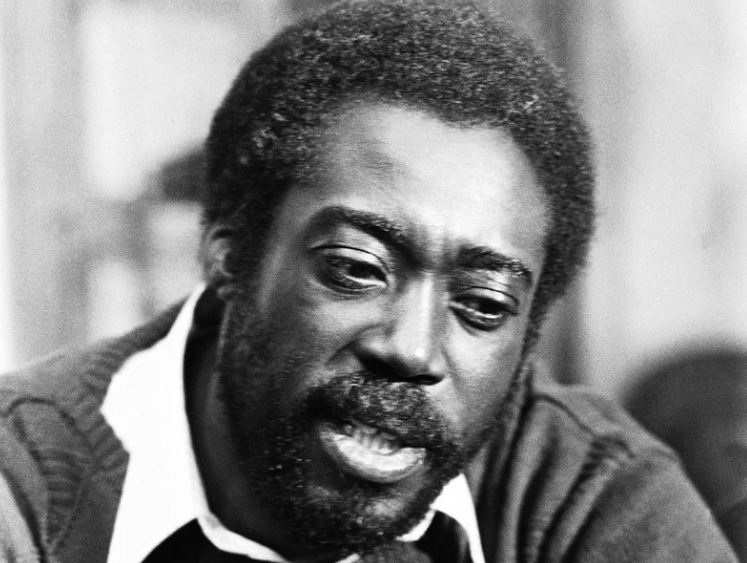
Bill Ingraham/AP
NEW YORK — Charles Fuller, the Pulitzer Prize-winning playwright of the searing and acclaimed "A Soldier's Play" who often explored and exposed how social institutions can perpetuate racism, has died. He was 83.
Fuller died of natural causes on Monday in Toronto, said his wife, Claire Prieto-Fuller.
Fuller's plays were filled with complex characters and an undercutting of conventions. "The best way to dispel stereotypes and massive lies is telling something as close to the truth as you can," Fuller told Newsday. In one review of his work, The New York Times said "clichés of form, plot and character shatter like skeets at a shooting range."
Fuller's most famous work, "A Soldier's Play," used a military setting in its tale of the search for the murderer of a Black sergeant on an Army base in Louisiana during World War II. It dissected entrenched racism as well as internal divisions in the Black military community, wrapping it in a murder mystery.
The play won the Pulitzer Prize for drama in 1982 and two years later was made into the Oscar-nominated best picture "A Soldier's Story," for which Fuller wrote the screenplay and earned an Oscar nomination.
"I'd just like to be considered a playwright fortunate enough to have written a 'hit,' and who wants to keep on writing plays that break through the wall,″ he told The New York Times in 1982.
The work has attracted a who's who of Black acting talent. The film version starred a young Denzel Washington, who had appeared in its first stage incarnation in New York alongside Samuel L. Jackson. A 2005 revival off-Broadway lured Taye Diggs, Anthony Mackie and Steven Pasquale.
It made its Broadway debut in the pandemic shortened season of 2020-21 with David Alan Grier and Blair Underwood and earned seven Tony nominations, including best play revival. Grier won the Tony for a featured actor and the play won best revival.
"It has been my greatest honor to perform his words on both stage and screen, his genius will be missed," Grier tweeted in mourning.
Born in Philadelphia, Fuller attended Villanova University and then joined the Army in 1959, serving in Japan and South Korea. He later studied at La Salle University.
He was working as a housing inspector in Philadelphia when the McCarter Theater in Princeton, New Jersey, mounted his drama ″The Perfect Party,″ which moved off-Broadway in 1969. The theme was intermarriage, but Fuller joked "it was one of the world's worst interracial plays."
Fuller wrote plays for the Negro Ensemble Company, and his works were mounted at New Federal Theater and Henry Street Settlement. His breakthrough came with "The Brownsville Raid," which told the true story of Black soldiers who were dishonorably discharged in 1906 after they were wrongly accused of murder. Only decades later did the Army exonerate them.
Five years after "The Brownsville Raid," Fuller used similar themes and settings in "A Soldier's Play," for which he was influenced by Herman Melville's "Billy Budd." Both novels were set in the military during wartime, but Fuller used the structure to discuss race in modern America.
In its 2005 review of the play, The New York Times said Fuller "uses clean-lined conventions to elicit disconcertingly blurred shades of racism, resentment and self-hatred among Black men waiting to fight in a white man's Army," adding, "These feelings are messy, confusing, contradictory." (In the play, one Black sergeant welcomes the jailing of a Black private: "one less fool for the race to be ashamed of.″)
Fuller said he was drawn to the military in his plays because, "historically, it's the only place where Black men have risen equal to white men," he told Newsday in 1988.
Another of his more successful plays was the 1980 domestic drama "Zooman and the Sign," which is about an ex-prizefighter whose 12-year-old daughter is killed while playing. None of his neighbors will come forward to identify the murderers. When the father puts up a sign asking for help, it attracts the press. But that makes him — not the killers — a neighborhood pariah.
The New York Daily News called the play in a 2009 revival as "powerfully plain-spoken, if less than subtle." Chadwick Boseman played Zooman in 2000 at age 23 in Lancaster, Pennsylvania. Fuller wrote a made-for-TV movie of the play in 1995.
Fuller also produced a cycle of Civil War-era plays that included "Sally," "Prince," "Jonquil" and "Burner's Frolic." His other works include the coming-of-age drama "The Sky Is Gray" for PBS and "A Gathering of Old Men" for CBS in 1987.
Fuller returned to the topic of the military with the play "One Night..." in 2013, which centered on a former Army truck driver whose life has unraveled since she went public with charges of rape against three fellow servicemen in Iraq. In one scene, she asks the Veterans Affairs Department for disability benefits. "Why am I a hero if I die," she says, "and a nuisance if I live?"
In addition to his wife, Fuller is survived by a son, David, a daughter-in-law, four grandchildren; and three great-grandchildren.
ARTICLE
https://www.npr.org/2022/10/04/1126807545/playwright-charles-fuller-dies-83
My Thoughts
Great play , my relatives who served in the commonly called second world war, verified or clarified various elements of the play. Its message about anger, retribution, black vs white in the usa military is... modernly poignant
PS
Kindred from Octavia Butler is coming to a screen, December 13th on Hulu
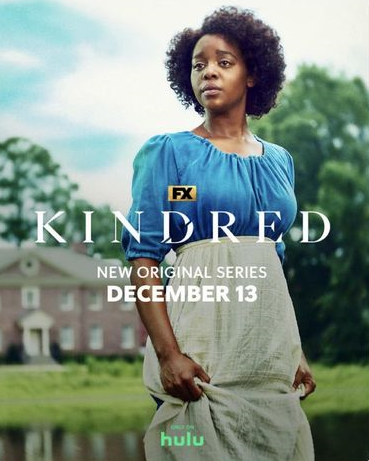
-

ALL HALLOWS TALES
The Contest
This is a Halloween-inspired, Literature-only contest asking for submissions of PROSE FICTION.
This year, you will be writing stories around the theme of major life changes. We'll be looking for new beginnings grounded in reality i.e. any supernatural, fantasy or sci-fi element should not in itself be the change. You know what I mean: the kind of thing that happened to Harry Potter (coming into magical powers) or Katniss Everdeen (being overtaken by the events of a dystopian society) will not fit the theme of the contest. Of course, what extraordinary things come of that ordinary life change could be absolutely anything...
What kind of story you write - and what you choose to write about - is up to you, but please remember that this is a Halloween contest. We're looking for pieces that are scary, disturbing, morbid, chilling, creepy, thrilling, suspenseful, ironic, satirical, or even darkly funny. Halloween, most of all, is supposed to be fun. Your entry should be entertaining to read, regardless of all else. So have fun with it!
How to Enter
When you have completed your story, save it as a Literature deviation (no journals) and send a note to [@ThornyEnglishRose] with a link to your entry, and AHT Contest Entry in the subject line. [S]he will then save it to an Entry Gallery. Please be aware that your entry is fair game for judging as soon as it is placed in the Entry Gallery, so make sure it's good to go!
Sending me a link via the Chat would also be acceptable.
Rules
Deadline is 11:59 PM Tuesday night, October 25 (GMT+1). This does give you several hours fewer than Jay allows; if that becomes an issue, contact me and we'll see if I'm feeling lenient! Winners will be announced on October 31 (bar unforeseen circumstances).
One entry per person. Judges are not eligible to enter.
Maximum word count is 3,000. No exceptions. Don't even ask.
Entries must be written in English. Entries must be new pieces posted after the contest begins.
Entries earning Daily Deviations or major features before the end of the contest will be disqualified. No fan-fiction will be accepted.
The official judging period will be the week after the contest deadline. HOWEVER, judges will be encouraged to read and score the entries as they come in. Please be aware that your entry is fair game for judging as soon as I place it in the entry gallery, so don't send it to me until you're ready for it to be judged!
-

Remember CD album artwork? Well, what if you or your OC (original character) made an album? What would the album cover look like? What kind of music would they make? Take a look online at examples of CD and vinyl record album covers you like and show us what you or your OC would make of it!
Want an extra challenge?
Provide a track listing!
Design the actual CD/record!
Link to various songs that inspired your album!
How Do I Participate?
Watch TsaoShin to keep up with challenge updates!
Create a new artwork of an album artwork inspired by you or your OC!
Submit your piece on DeviantArt with the tag #albumyourself
Submit your work no later than Midnight ET October 31, 2022
https://www.deviantart.com/tsaoshin/journal/Album-Yourself-Challenge-931733020
P.S.
The entries so far:) enjoy the art
https://www.deviantart.com/tag/albumyourself
-
Create a beast
ok
The template
Layout your lair, coming soon
-


build a beast- each monday a new prompt, this is the first
intro
https://art.tumblr.com/post/696465058808676352/greetings-tumblr-it-is-we-tumblr-as-our
first week
https://art.tumblr.com/post/697097342819696640/salutations-stooges-it-is-time-to-build-your
tag
https://art.tumblr.com/tagged/build a beast
a featured entries
https://emilylorange.tumblr.com/post/697113051011383296/
https://art.tumblr.com/post/697189884050505728/meet-the-artist-ampreh-howdy-im-ampreh-i-am-a
https://alexsketches.tumblr.com/post/697099344845897728/
https://markmefistov.tumblr.com/post/697193022251778048/
https://moonamayillu.tumblr.com/post/697109273512165376/hi-yall-ive-been-invited-this-year-to
https://fraanz.tumblr.com/post/697168035115597824/
https://purple-clock-art.tumblr.com/post/697118329622642688/
https://lemonglop.tumblr.com/post/697128045076676608/
https://fourbrickstall.tumblr.com/post/697369286911639552/
https://ir-dr.tumblr.com/post/697103040430440448/day-3386-3-october-2022-lil-werebunny-beastie
https://nuhmarika.tumblr.com/post/697375994193051648/
https://alanahsart-blog.tumblr.com/post/697135938932031488/
https://mystery-of-arkham-asylum.tumblr.com/post/697314330356711424/
https://dmblondiecheerleader.tumblr.com/post/697232518484770816/ -

-


